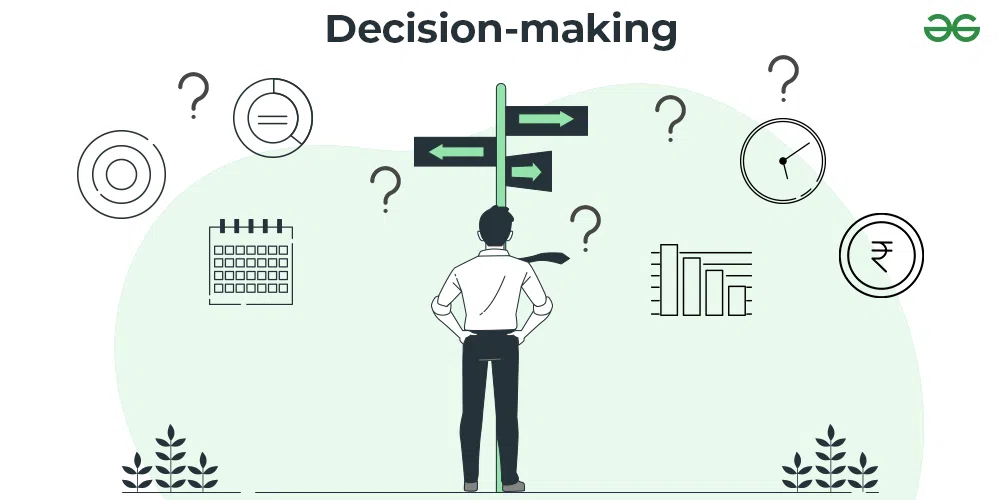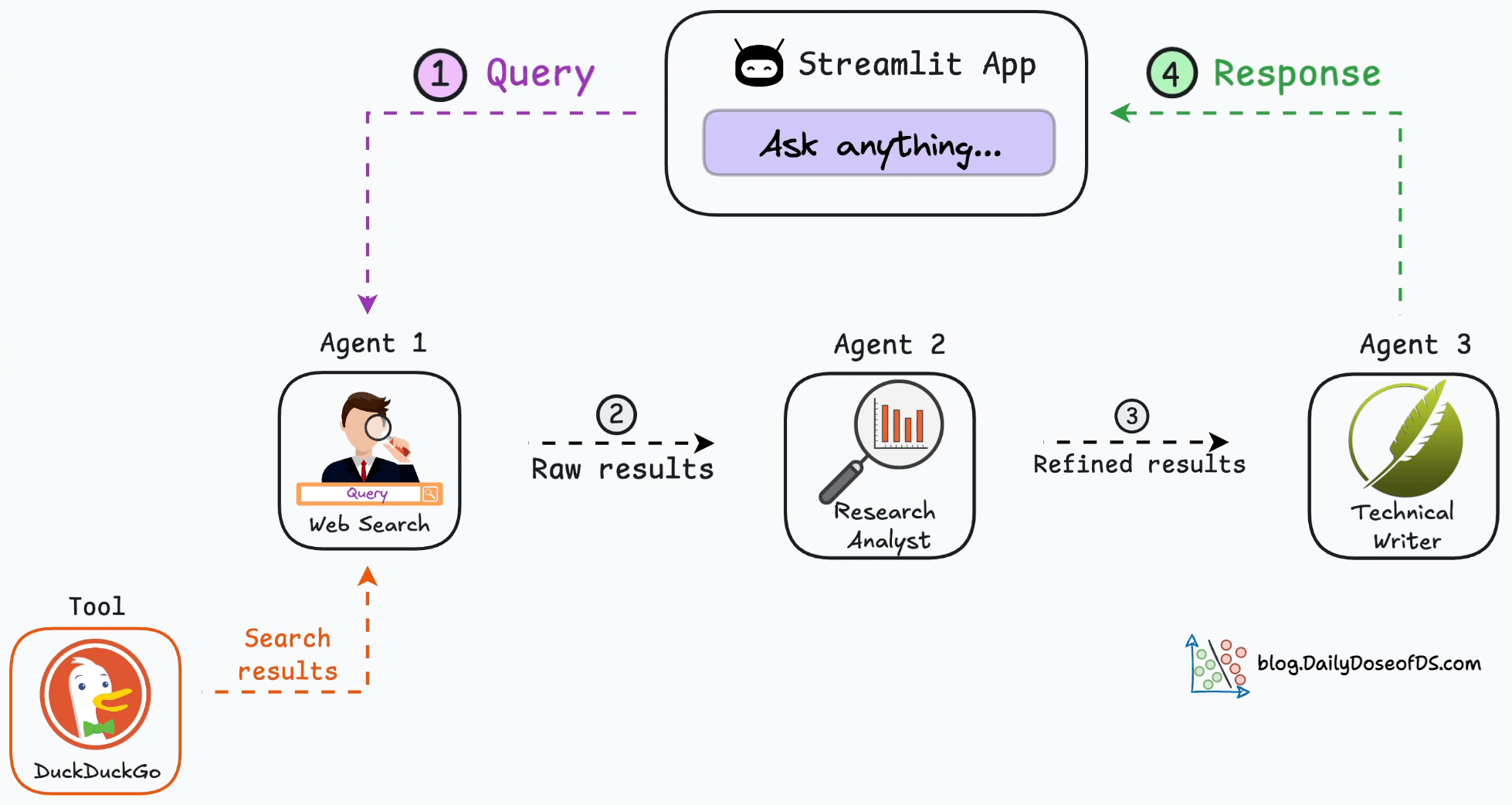https://github.com/ranfysvalle02/decision-tree-automation
Agents that process data, follow workflows, and make choices based on predefined logic.
https://github.com/ranfysvalle02/decision-tree-automation
Last synced: 6 months ago
JSON representation
Agents that process data, follow workflows, and make choices based on predefined logic.
- Host: GitHub
- URL: https://github.com/ranfysvalle02/decision-tree-automation
- Owner: ranfysvalle02
- Created: 2025-01-24T04:13:08.000Z (9 months ago)
- Default Branch: main
- Last Pushed: 2025-01-24T05:31:29.000Z (9 months ago)
- Last Synced: 2025-02-12T07:55:56.036Z (8 months ago)
- Language: Python
- Homepage:
- Size: 484 KB
- Stars: 0
- Watchers: 1
- Forks: 0
- Open Issues: 0
-
Metadata Files:
- Readme: README.md
Awesome Lists containing this project
README
# decision-tree-automation

---
# Bridging Workflows, Agents, and Human Thought
Have you ever wondered how the human mind makes decisions so effortlessly? When you step outside and decide whether to carry an umbrella, you're processing information, evaluating conditions, and arriving at a conclusion—all in a matter of seconds.
In the world of programming and automation, we strive to replicate this kind of intuitive decision-making. We build **agents** that process data, follow workflows, and make choices based on predefined logic. But these computational processes aren't just about code; they mirror the pathways our brains take when navigating decisions.
---
## The Art of Decision-Making
At its heart, decision-making involves three core steps:
1. **Gathering Information**: We perceive inputs from our environment.
2. **Processing Data**: We evaluate conditions based on knowledge and experience.
3. **Arriving at a Conclusion**: We decide on the best course of action.

For humans, this process is influenced by intuition, emotions, and past experiences. In programming, we emulate this by writing algorithms that process inputs, evaluate conditions, and output decisions.
### A Real-World Example
Consider the simple act of deciding whether to bring an umbrella:
- **Is it raining?**
- If yes: *Bring an umbrella.*
- **Is it cloudy?**
- If yes: *Check the humidity.*
- High humidity: *Bring an umbrella.*
- Low humidity: *No umbrella needed.*
- **Otherwise**: *No umbrella needed.*
This decision-making flowchart is something we navigate subconsciously, yet it's a perfect example of a logical process that can be modeled in code.
---
## Agents and Workflows: Mimicking the Mind

### What Is an [Agent](https://github.com/ranfysvalle02/vanilla-agents)?
In programming, an **agent** is an autonomous entity that can perceive its environment, process inputs, and act to achieve specific goals. Think of it as a virtual decision-maker that follows a set of instructions to perform tasks.
### Understanding Workflows
A **workflow** is a sequence of steps or tasks designed to accomplish a particular objective. Workflows can be linear or involve branches based on conditional logic, much like a flowchart.
By combining agents with workflows, we enable systems to automate complex processes, breaking them down into manageable tasks that can be executed in order.
Our brains function in a remarkably similar way to agents processing workflows:
- **Perception**: We receive sensory inputs—sights, sounds, smells.
- **Evaluation**: We analyze these inputs against our knowledge and memories.
- **Decision Points**: We reach conclusions at various stages, influencing subsequent thoughts.
- **Sequential Processing**: Our thoughts flow logically, even if subconsciously.
- **Action**: We act based on our decisions.
---
## A Peek into the Process
### The Structure
- **Task Classes**: Represent individual decision points.
- **Agent**: Executes the tasks in sequence.
- **Process**: The workflow that the agent follows.
- **Decision Functions**: Contain the logic for each decision point.
### How It Works
1. **Agent Starts the Process**: The agent begins executing the workflow.
2. **Checks if It's Raining**:
- If yes, the agent decides to bring an umbrella.
- If no, moves to the next task.
3. **Checks if It's Cloudy**:
- If yes, proceeds to check humidity.
- If no, decides no umbrella is needed.
4. **Checks Humidity**:
- High humidity: Agent decides to bring an umbrella.
- Low humidity: Agent decides no umbrella is needed.
5. **Final Decision**: The agent concludes the process with a recommendation.
```python
# demo.py
class Task:
def __init__(self, description):
self.description = description
async def run(self, **kwargs):
pass # To be implemented by subclasses
class DecisionTask(Task):
def __init__(self, description, decision_function):
super().__init__(description)
self.decision_function = decision_function
async def run(self, **kwargs):
result = self.decision_function(**kwargs)
return result
class CustomProcess:
def __init__(self, tasks):
self.tasks = tasks
async def run(self, **kwargs):
results = {}
for task in self.tasks:
result = await task.run(**kwargs)
results[task.description] = result
kwargs.update({task.description: result})
return results
class Agent:
async def execute_process(self, process, **kwargs):
return await process.run(**kwargs)
async def main():
weather_input = 'Cloudy'
humidity_input = 'High'
# Decision functions
def is_rainy(weather):
return weather.lower() == 'rainy'
def is_cloudy(weather):
return weather.lower() == 'cloudy'
def is_high_humidity(humidity):
return humidity.lower() == 'high'
# Create tasks
task1 = DecisionTask("Check if weather is rainy", lambda weather, **kwargs: is_rainy(weather))
task2 = DecisionTask("Check if weather is cloudy", lambda weather, **kwargs: is_cloudy(weather))
task3 = DecisionTask("Check if humidity is high", lambda humidity, **kwargs: is_high_humidity(humidity))
# Create process and agent
my_process = CustomProcess([task1, task2, task3])
agent = Agent()
# Execute process
results = await agent.execute_process(my_process, weather=weather_input, humidity=humidity_input)
# Final decision
if results["Check if weather is rainy"]:
decision = "Yes, you should bring an umbrella."
elif results["Check if weather is cloudy"]:
if results["Check if humidity is high"]:
decision = "Yes, you should bring an umbrella."
else:
decision = "No need to bring an umbrella."
else:
decision = "No need to bring an umbrella."
print(f"Final Decision: {decision}")
if __name__ == "__main__":
import asyncio
asyncio.run(main())
```
---
## Ethical Considerations
As we create agents that make decisions, we must consider the ethical implications:
- **Transparency**: Ensuring it's clear how and why decisions are made.
- **Bias**: Avoiding unintended biases in decision logic.
- **Accountability**: Establishing who is responsible for the agent's decisions.
Understanding the parallels with human thought underscores the importance of embedding ethical considerations into our automated systems.
---
## Conclusion
By bridging the gap between computational models and human cognition, we open up exciting possibilities for innovation and insight. As we continue to explore these connections, we not only enhance our technological capabilities but also gain a deeper understanding of the human experience.
Happy coding!
---